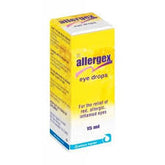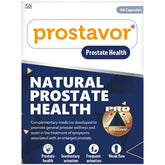Dislocated kneecap
Dislocated Kneecap, or patellar dislocation, occurs when the patella (kneecap) slips out of its normal position in the patellofemoral groove on the front of the knee. This typically happens laterally (to the outside of the knee) and can cause pain, swelling, and a visibly deformed knee.
Symptoms
Common symptoms of a dislocated kneecap include:
- Intense Pain: Immediate, sharp pain in the knee.
- Visible Deformity: The kneecap may be visibly out of place.
- Swelling: Rapid swelling around the knee joint.
- Inability to Straighten the Knee: Difficulty or inability to extend the knee.
- Instability: Feeling of the knee giving way or being unstable.
- Bruising: Around the kneecap after the injury.
Tests and Diagnosis
To diagnose a dislocated kneecap, healthcare providers may use:
- Physical Examination: Assessing knee alignment, swelling, and range of motion.
-
Imaging Tests:
- X-rays: To confirm the dislocation and check for fractures.
- MRI or CT Scan: To evaluate soft tissue damage, including ligaments and cartilage.
Causes
Common causes of kneecap dislocation include:
- Trauma: Direct blow to the knee, such as in contact sports.
- Sudden Twisting Movements: Rapid change in direction or pivoting.
- Structural Abnormalities: Misalignment of the patella or shallow patellofemoral groove.
- Weak Muscles or Ligaments: Weak quadriceps or lax ligaments can increase susceptibility.
Types
Types of patellar dislocation include:
- Acute Dislocation: Occurs suddenly due to injury or trauma.
- Recurrent Dislocation: Repeated episodes, often due to underlying anatomical issues or ligament laxity.
Risk Factors
Risk factors for kneecap dislocation include:
- Age and Activity Level: More common in teenagers and young adults, especially athletes.
- Gender: Higher incidence in females due to anatomical differences.
- Previous Dislocations: Increased risk of recurrence.
- Congenital Conditions: Such as a shallow patellofemoral groove or ligamentous laxity.
Prevention
To prevent kneecap dislocation:
- Strengthening Exercises: Focus on quadriceps, hamstrings, and hip muscles to stabilize the knee.
- Proper Techniques: Use correct techniques in sports and activities.
- Protective Gear: Wear knee braces or supports if you have a history of dislocation.
- Avoiding High-Risk Activities: If you have known knee instability.
Treatments and Medication
Treatment for a dislocated kneecap typically involves:
- Reduction: A healthcare provider will manually reposition the kneecap back into place.
- Immobilization: Using a knee brace or splint to keep the knee stable while it heals.
- Pain Relief: Medications such as NSAIDs (e.g., ibuprofen) to manage pain and inflammation.
- Physical Therapy: To restore strength, stability, and range of motion through targeted exercises.
- Surgery: In cases of severe damage or recurrent dislocations, surgical intervention may be necessary to realign and stabilize the knee.
Natural Remedies
Natural remedies and supportive measures include:
- Ice Packs: Applying ice to reduce swelling and pain immediately after the injury.
- Rest: Avoiding activities that strain the knee to allow for proper healing.
- Gradual Exercise: Gentle exercises to regain strength and flexibility as recommended by a healthcare provider.
Complications
Potential complications of a dislocated kneecap include:
- Recurrent Dislocations: Increased risk of repeated dislocations.
- Knee Instability: Persistent looseness in the knee joint.
- Damage to Cartilage or Bone: Leading to long-term knee problems.
- Arthritis: Increased risk of developing arthritis in the knee joint over time.
Supportive Care
Supportive care for a dislocated kneecap involves:
- Follow-Up Visits: Regular check-ups with a healthcare provider to monitor healing progress.
- Rehabilitation Programs: Structured physical therapy to strengthen the knee and prevent future injuries.
- Education: Learning how to avoid activities that could lead to re-injury.
When to See a Doctor
Seek medical attention if:
- You suspect a kneecap dislocation.
- You experience severe pain, swelling, or an inability to move the knee.
- There is numbness, tingling, or weakness in the leg or foot.
- The knee appears deformed or out of place.
Coping and Support
Coping strategies for dealing with a dislocated kneecap include:
- Adherence to Treatment Plan: Following the prescribed treatment and rehabilitation plan.
- Support Groups: Joining groups for individuals with similar injuries.
- Patience and Persistence: Recovery can take time, so it’s important to stay motivated and persistent with therapy and exercises.
Caring for the Caregiver
Tips for caregivers include:
- Educate Yourself: Learn about kneecap dislocations and the recovery process.
- Provide Emotional Support: Offer encouragement and emotional support to the patient.
- Assist with Daily Activities: Help with tasks that may be difficult for the patient during recovery.
- Monitor for Complications: Be vigilant for signs of complications and ensure follow-up medical appointments are kept.
In summary, a dislocated kneecap is a painful injury that requires prompt and effective treatment to ensure proper healing and prevent complications. Recognizing the symptoms, understanding the causes, and knowing the treatment options are crucial for managing this condition. Regular follow-up, rehabilitation, and supportive care play vital roles in recovery and preventing future dislocations.
- Complication of Dislocated kneecap
- Diagnosis of Dislocated kneecap
- Dislocated kneecap
- Dislocated kneecap myths
- How is Dislocated kneecap treated?
- Medicine for Dislocated kneecap
- Remedies for Dislocated kneecap
- Support for Dislocated kneecap
- Symptoms associated with Dislocated kneecap
- The best British Online Pharmacy
- Top 10 UK Pharmacies
- Treatment for Dislocated kneecap
- What causes Dislocated kneecap
- What is Dislocated kneecap
- Where can I buy medicine for Dislocated kneecap in the UK
- ZimSeller Pharmacy



















